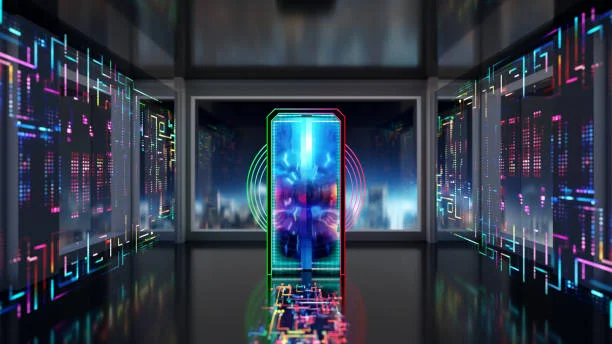The construction industry has its revolutionaries, and right now they’re building the backbone of our digital future. State-of-the-art data centre builders are pioneering construction techniques that seemed impossible just a few years ago, creating facilities that can handle the explosive growth of artificial intelligence, quantum computing, and edge processing. These companies are designing buildings that consume 90% less water than traditional data centres, use renewable energy for 100% of their operations, and can be built in half the time using prefabricated components manufactured off-site. The global data centre construction market is projected to reach $65 billion by 2027, driven entirely by these innovative approaches to building digital infrastructure.
Revolutionizing Construction with Prefabrication
The smartest data centre builders have completely reimagined how these facilities get built. Instead of constructing everything on-site, they’re manufacturing major components in controlled factory environments, then assembling them like sophisticated building blocks.
This approach has changed the game entirely. Where traditional data centre construction might take 18-24 months, prefabricated facilities can be operational in 6-9 months. The quality control is dramatically better too – when you’re building electrical systems and cooling components in a factory setting, you can achieve precision that’s simply impossible in outdoor construction environments.
Facebook’s data centres showcase this perfectly. Their modular approach uses standardized components that can be manufactured simultaneously while site preparation happens. Each module arrives at the construction site as a complete unit with cooling systems, electrical distribution, and even pre-installed servers ready to plug in and start operating.
The cost savings are substantial. Prefabrication reduces construction waste by up to 80% and cuts labor costs significantly. More importantly, it allows builders to optimize designs across multiple projects, incorporating lessons learned from previous facilities into standardized components that get better with each iteration.
Sustainable Innovation at Scale
State-of-the-art builders aren’t just thinking about today’s power requirements – they’re designing for a future where data centres must operate carbon-neutral while handling exponentially growing computational demands.
Google’s data centre builders have pioneered machine learning systems that optimize cooling in real-time, reducing energy consumption by 40% compared to traditional approaches. These systems continuously adjust airflow, temperature, and humidity based on actual server loads rather than static predictions.
Water conservation has become equally important. Traditional data centres can consume millions of gallons daily for cooling. Advanced builders are implementing closed-loop cooling systems that recycle water continuously, reducing consumption by up to 95%. Some facilities now operate entirely on recycled wastewater or use advanced air cooling that eliminates water usage completely.
Renewable energy integration requires careful planning from the construction phase. State-of-the-art builders design facilities with built-in solar panel mounting systems, wind power connections, and battery storage capabilities. Microsoft’s data centres in Wyoming generate more renewable energy than they consume, feeding excess power back to the local grid.
AI-Optimized Infrastructure Design
Building for artificial intelligence requires completely different approaches compared to traditional data centres. AI workloads generate intense heat concentrations and require specialized cooling solutions that most builders have never encountered.
State-of-the-art builders understand that AI processors operate optimally at specific temperatures and humidity levels. They design micro-climate zones within data centres, creating perfect environmental conditions for different types of computing workloads. This might mean liquid cooling for AI training clusters while maintaining traditional air cooling for storage systems in the same facility.
The electrical infrastructure for AI facilities is mind-boggling. A single AI training cluster might require 10 megawatts of power – enough to supply a small city. Advanced builders design electrical systems that can handle these massive loads while maintaining the redundancy and reliability that data centres require.
Network infrastructure for AI workloads needs to support data transfer rates that would overwhelm traditional systems. State-of-the-art builders install fiber optic networks capable of handling hundreds of terabits per second, with cable management systems designed for easy upgrades as network technology continues advancing.
Edge Computing Integration
The future of data centres isn’t just about massive centralized facilities – it’s about creating networks of smaller, highly efficient edge locations that bring computing power closer to users.
Smart builders are developing standardized edge data centre designs that can be deployed rapidly in urban environments, industrial locations, and even remote areas. These facilities need to operate reliably with minimal human oversight, requiring advanced automation systems and remote monitoring capabilities.
5G networks are driving demand for thousands of small edge facilities. State-of-the-art builders have created designs that can be installed in existing buildings, on rooftops, or as standalone structures that blend into urban environments. These aren’t just scaled-down versions of large data centres – they require completely different approaches to cooling, power distribution, and security.
Quantum-Ready Infrastructure
Some forward-thinking builders are already preparing for quantum computing integration. Quantum processors require environmental conditions that are more extreme than anything currently used in data centres – temperatures approaching absolute zero and complete isolation from electromagnetic interference.
Building quantum-ready infrastructure means creating specialized isolation chambers within traditional data centres, with vibration dampening systems that prevent even minor building movement from affecting quantum operations. The electrical systems must provide power that’s cleaner and more stable than what’s required for traditional computing equipment.
Disaster Resilience and Business Continuity
State-of-the-art builders design facilities that can continue operating through natural disasters, cyber attacks, and infrastructure failures. This goes far beyond traditional backup power systems.
Modern resilient design includes underground data centres that are naturally protected from extreme weather, floating data centres that can relocate during emergencies, and distributed architectures where facilities in different geographic regions automatically take over critical operations when problems occur.
The most advanced facilities include hardened communications systems that can maintain connectivity even when local internet infrastructure fails, and automated systems that can continue operating critical services for weeks without human intervention.
Smart Building Integration
The future of data centre construction involves facilities that continuously optimize themselves using AI and machine learning. Smart builders are installing thousands of sensors throughout facilities, creating systems that can predict equipment failures, optimize energy consumption, and automatically adjust environmental conditions.
These intelligent systems learn from operational data to continuously improve efficiency. They can predict when specific servers are likely to fail based on temperature patterns, vibration signatures, and performance metrics, allowing maintenance teams to replace components before failures occur.
Building management systems now integrate with cloud platforms, allowing global optimization across multiple data centre locations. This means workloads can automatically migrate to facilities with the best current efficiency ratings, and cooling systems can pre-adjust for predicted weather patterns.
Looking for more value? This related post is packed with tips you’ll love!






